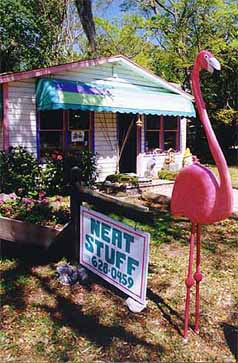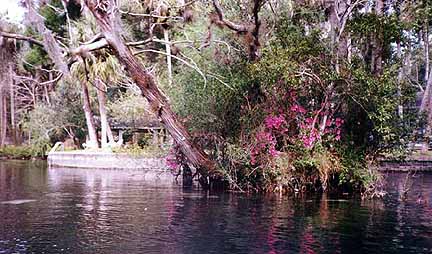
F L O R I D A

C I T Y S C A P E

Old Homosassa, the quiet, yet vibrant fishing village located on Florida's Nature Coast, manages to combine the Old Florida with the New Florida in a classic style.
Story and Photos By A. J. Burch
Nestled
between Chassahowitzka, an unincorporated area south of Homosassa
directly
off Highway 19 (Suncoast Boulevard in Citrus County), and Crystal River
to the North in Southwest Citrus County, the Homosassa area is a haven
for the nature lover, the traveler seeking the ideal place to get away
from it all, and those in search of Old Florida. Ideal for a day trip
adventure, weekend or a complete vacation, Homosassa also caters to senior
Floridians with enticing special discounts.
History
The area was inhabited by Native Americans 1,000 years before Hernando de Soto arrived. These first Americans experienced an abundance of fish and shell life, sub-tropical forests and vast wetlands. In more recent history, Homosassa's most famous early settler, David Levy Yulee, 1810-86, a New York entrepeneur, built Florida's first cross-state railroad and was Florida's first U. S. Senator. As a delegate to Congress, he helped write Florida's first constitution. The Yulee Sugarmill began operations in 1844, supplying the Confederate Army with sugar, syrup and molasses during the Civil War. His home was burned by Federal raiders on May 29, 1864. There are visual descriptions along the pathway around the sugarmill describing the day-to-day operations, its history and machinery.
When the Civil War ended, many families in the area fled to the numerous small islands located around the areas of Homosassa and Crystal River, many of which are named for the families who settled on them. Island homes were self-supporting, each with its own kitchen garden, livestock and fruit trees. Early homes were built of native palm logs with a thatched palm leaf roof; these homes were cheap, practical and attractive. Sloops brought supplies and the local mail from Cedar Key. 
Many changes came to Homosassa in the following years. A group of New England financiers purchased the riverfront property of the Homosassa River in 1886, which was uninhabitable at that time. Property was made available to the public in 1921. Many famous and wealthy sportsmen have enjoyed the area ever since. The first arrived from Ocala by horse and buggy to the Osceola Inn, The Meeker House, Dunn Cottage, the Rendezvous and the Atlanta Club. Today the economy is built on commercial fishing, guides for sports fishermen and recreational and resort facilities. Some other illustrious visitors to Homosassa have included Grover Cleveland (with Grover Cleveland Boulevard named in his honor), who came to fish and enjoy some r&r. Babe Ruth was a frequent visitor as was "Dazzy" Vance, a baseball Hall of Famer, who bought the Homosassa Hotel and resided there. Winslow Homer came in 1904 in the winter season and some of his noted art works were done in Homosassa.
More-->
|

![]()


